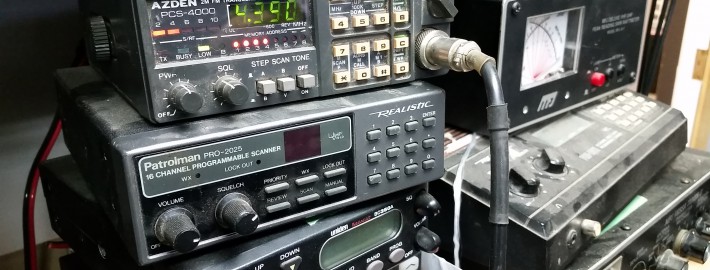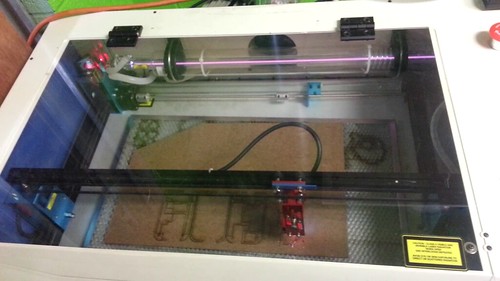Need to Test Some LEDs?
I’ve been buying some 3W LEDs from various sources for a project. Each of those sellers makes wildly improbable claims about the brightness and chromaticity of their LEDs, but I didn’t have a good way to verify them and see which are best. I found a light meter in the i3 Detroit eLab, but getting consistent readings from that was difficult. The readings depend upon ambient lighting, angle to the LED’s axis, distance from the emitter, etc. I finally came up with an idea for a (relatively quick) little jig to get consistent readings which at least allow me to compare LEDs to each other. As a bonus, the materials are very cheap and it’s easy to build.
Complete LED tester
LED mounted on the base of the jig.
The LED is mounted under a piece of shim stock cut to form electrodes. The electrodes can either contact the pads on the heatsink, or the leads on the LED itself.
This is the view from the end where the light meter probe fits into the laser-cut opening. Because no problem worth solving cannot be solved with a laser cutter.
The interior of the chamber is painted with flat black paint to reduce the effects of any light leakage at the joints and reflections from the walls due to angle of view of the LED.
View of LED from the business end of the jig
This jig is easy to connect to a current-limiting power supply, and it blocks out ambient light well (the meter reads 0 lux with the power off). What it does not do well is provide removal of heat from the LED’s heatsink. So it’s important to run the LED at a current level that does not generate a lot of heat, possibly wrecking the chip. I used 600 mA for an LED rated at 700 mA and wavelength of 660 nm. Blue LEDs generate more heat, so they would have to be tested at an even lower power level. But the point here is to compare LEDs within the same lot or between lots, not to get calibrated readings that can be compared to standards. That would require a much more expensive meter.
Why buy all these LEDs? I’ll save that for a future post.










